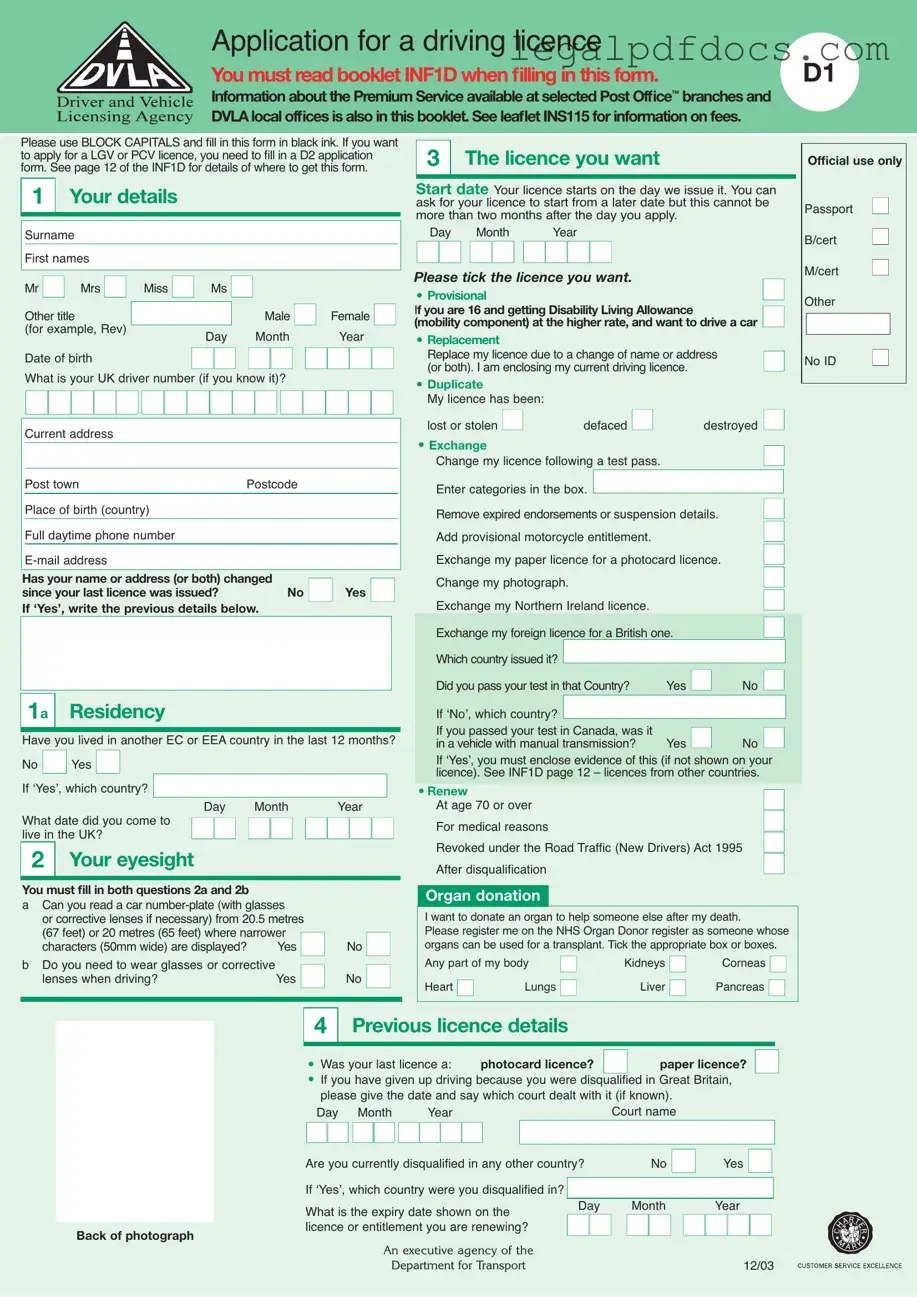The D1 DVLA form is a crucial document for anyone looking to apply for or renew a UK driving licence. This form serves multiple purposes, including applications for provisional licences, replacements due to name or address changes, and renewals for those aged 70 or over. It is essential to fill out the form accurately, using block capitals and black ink, as specified in the accompanying booklet, INF1D. Applicants must provide personal details such as their name, date of birth, and contact information, along with any changes since their last licence was issued. Additionally, the form includes sections that assess eyesight and health conditions that could affect driving ability. For instance, applicants must confirm their ability to read a number plate from a specified distance and disclose any medical conditions that may impair their fitness to drive. Furthermore, the D1 form requires information about previous licences and identity verification documents, ensuring that applicants meet all necessary criteria. By following the guidelines and providing the required information, individuals can facilitate a smoother application process for their driving licence.
